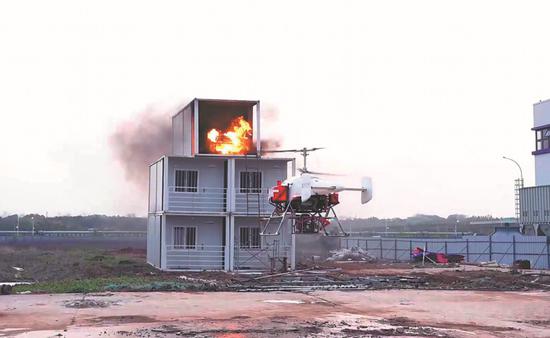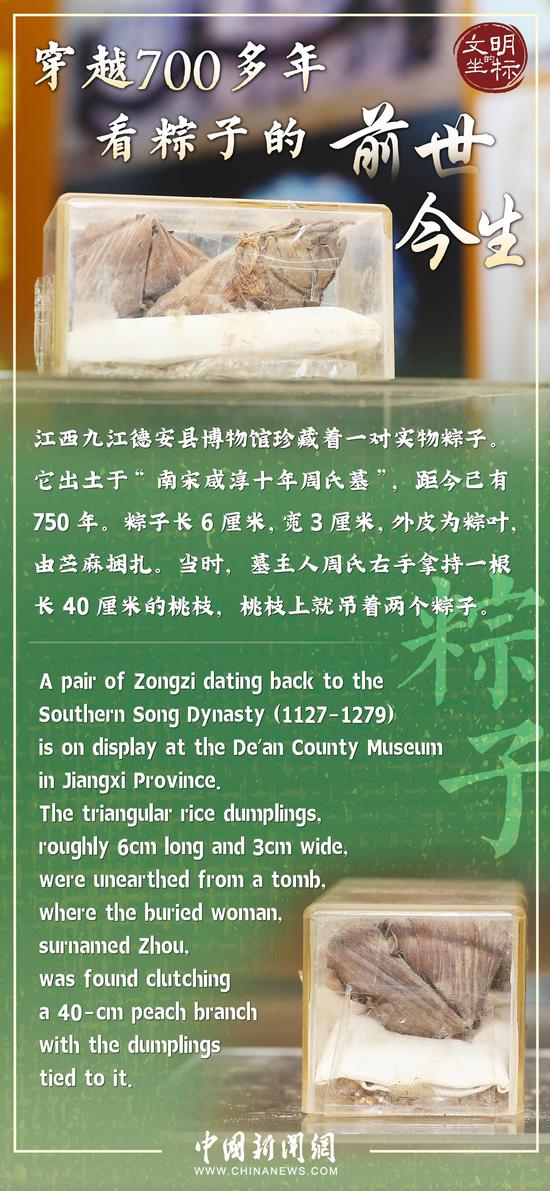
United Aircraft's drone is used to fight fire in Wuhu, Anhui province. (PHOTO/CHINA DAILY)
The low-altitude economy, highlighted for the first time in China's Government Work Report for 2024, is rapidly gaining momentum across the country.
With strategic policies and targeted development plans, some provinces and cities are leveraging the opportunity to significantly accelerate the growth of the low-altitude industry.
Beijing, for instance, recently released a draft plan for the high-quality development of the low-altitude economy (2024-27) for public feedback. The comprehensive plan outlines six major categories and 20 specific tasks, aiming to greatly boost the industry.
By 2027, the goal is to have over 5,000 enterprises engaged in the low-altitude economy, with nationwide coverage of low-altitude technology services and enhanced international and domestic influence. The plan emphasizes innovation and application, targeting a contribution of over 100 billion yuan ($13.8 billion) to the city's economy within three years, Beijing said.
Guangdong province's government work report for 2024 explicitly supports the development of comprehensive general aviation industrial demonstration zones in Shenzhen, Guangzhou, and Zhuhai. The plan for 2024-26 aims to establish the province as a global leader in the low-altitude economy, targeting an industry scale exceeding 300 billion yuan within three years.
Shandong, an industrial powerhouse, is focusing on the drone industry. The "Shandong High-Quality Development Implementation Plan for the Drone Industry" aims for the drone manufacturing sector to surpass 10 billion yuan by 2025. This includes nurturing about 10 leading enterprises with outputs exceeding 1 billion yuan and around 100 innovative small and medium-sized enterprises.
Luo Jun, secretary-general of the China Low-Altitude Economy Alliance, said the potential for the low-altitude economy is vast, with market demand driving the development of advanced personal air vehicles and sophisticated logistics tools.
He underscored the need for regions to leverage their unique advantages without overexpansion.
"China's low-altitude economy is still in the nascent stage," Luo said, noting the significant market space and the current focus on lightweight, low-speed drones and small vertical takeoff and landing aircraft.
According to him, as the low-altitude economy evolves, Chinese companies are poised to drive innovation, enhance infrastructure, and ensure sustainable growth. The dynamic sector is set to become a cornerstone of China's economic landscape, fostering new quality productive forces and serving as a new growth engine.
A notable example of technological advancement is in Zhoushan, Zhejiang province, where a massive drone recently took off from a large fishing vessel, carrying live fish to Shanghai in just one hour. This significant reduction in time from the traditional three-hour boat ride was made possible by extensive 5G network coverage.
Utilizing multifrequency coordination and low-altitude coverage optimization, China Mobile said it has achieved comprehensive 5G network coverage at altitudes up to 300 meters, ensuring reliable communication for drones over long distances.
China Mobile has also pioneered the construction of "zero-carbon" 5G base stations on uninhabited islands using solar power, overcoming challenges such as harsh weather conditions and lack of power supply. These efforts ensure continuous network connectivity, facilitating efficient drone operations for logistics, sea rescue, emergency response, and environmental monitoring.
Tian Gangyin, founder, chairman, and president of United Aircraft Group, said the expansion of low-altitude flights in future, particularly with the explosive growth of drones, necessitates robust interconnectivity and management solutions.
He emphasized the need for comprehensive communication, monitoring, and countermeasures to manage this expansion effectively.
Sun Xin, an assistant professor at Beihang University, said application scenarios are a critical link in the low-altitude economy industrial chain. Currently, the low-altitude economy has been integrated into tourism, agricultural production, environmental monitoring, emergency rescue, and logistics. The range of applications is continuously expanding, and the "flight radius" is extending.
Meanwhile, unmanned flight operations and manned flights are in the experimental verification stage, and drone logistics services have extended to urban business districts and communities, he added.
From a regional perspective, local governments are using various financial tools to promote the coordinated development of all segments of the low-altitude economy, with notable industrial clustering advantages and distinctive industrial characteristics, Sun said.


















































 京公网安备 11010202009201号
京公网安备 11010202009201号